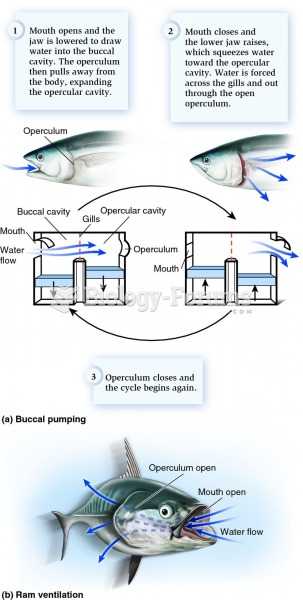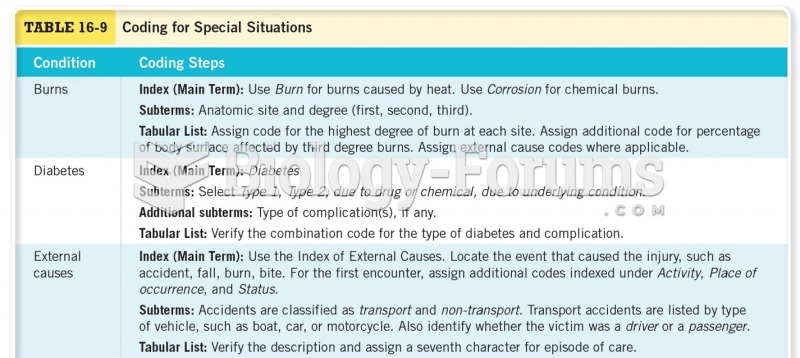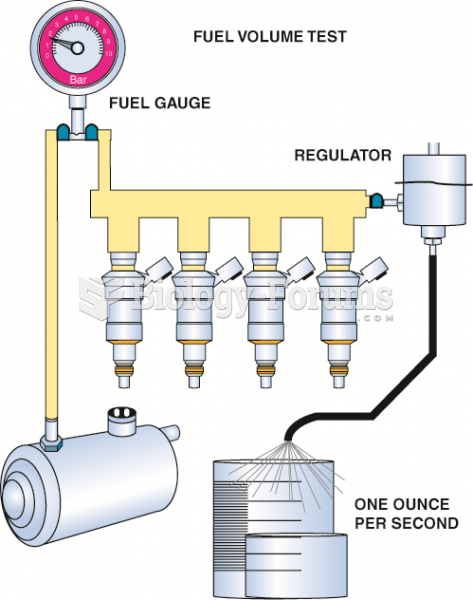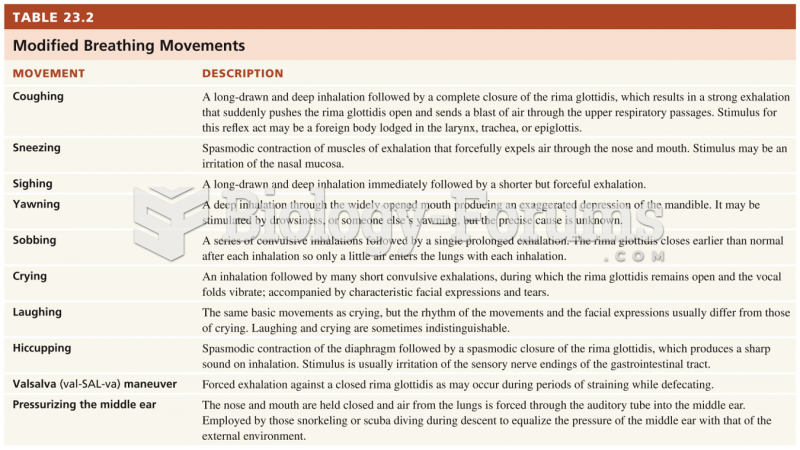|
|
|
On average, someone in the United States has a stroke about every 40 seconds. This is about 795,000 people per year.
Drug abusers experience the following scenario: The pleasure given by their drug (or drugs) of choice is so strong that it is difficult to eradicate even after years of staying away from the substances involved. Certain triggers may cause a drug abuser to relapse. Research shows that long-term drug abuse results in significant changes in brain function that persist long after an individual stops using drugs. It is most important to realize that the same is true of not just illegal substances but alcohol and tobacco as well.
The training of an anesthesiologist typically requires four years of college, 4 years of medical school, 1 year of internship, and 3 years of residency.
The people with the highest levels of LDL are Mexican American males and non-Hispanic black females.
People about to have surgery must tell their health care providers about all supplements they take.







